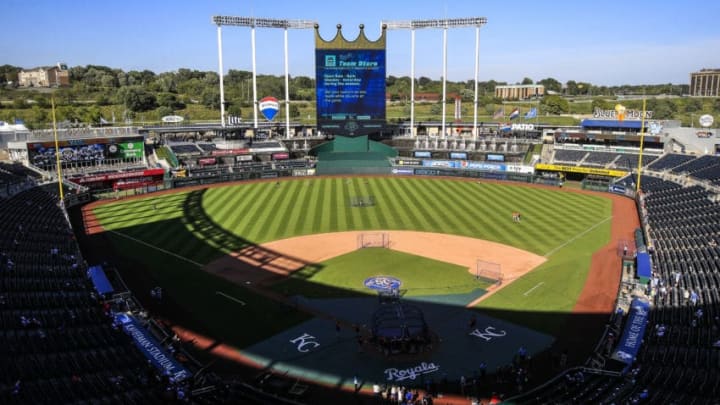KC Royals: Examining Kansas City’s 3 worst trades ever
Kansas City has made some pretty bad trades. Here are the worst of them all.

Few things in baseball evoke as much thought, scrutiny, discussion, argument, and visceral reaction than trades. As deals the KC Royals have made demonstrate, some trades are good, some bad, and some turn out to have no real impact. No one knows immediately how a trade will turn out: healthy players may suffer injuries, hot players may slump, others may simply fail after being traded and trade “throw-ins” may suddenly catch fire and become stars.
The Kansas City Royals have completed hundreds of trades since acquiring Buck Martinez, Mickey Sinnerud and Tommy Smith from Houston in exchange for John Jones 1968. (KC acquired four players before that trade, including former Kansas City Athletics pitchers Orlando Peña and Dave Wickersham; because those deals were purchases involving no other players, the Martinez deal was the Royals’ first true player trade).
Martinez became a solid catcher, making the deal good for the Royals. Other trades have been better, others worse. Here, in reverse order, are three trades worthy of the label “worst trades in Royals’ history” and another worthy of honorable (or dishonorable) mention.
The Royals made a major trade blunder during the 2017 season
Royals general manager Dayton Moore faced the classic “buyers or sellers” dilemma as the 2017 July trade deadline approached: trade soon-to-be free agents Eric Hosmer, Lorenzo Cain, Mike Moustakas and Alcides Escobar for prospects to begin a Royals rebuild or, with the club still eyeing a playoff berth, trade for stretch run help?
Moore chose to make one last run with his stars. Needing pitching but having to give up pitching to get it, Moore sent lefties Matt Strahm and Travis Wood and and minor league infield prospect Esteury Ruiz to San Diego for veteran pitchers Brandon Maurer, Trevor Cahill and Ryan Buchter. Immediate help was the goal; a failed trade became the reality.
Although Buchter appeared in 29 games for KC and went 1-0 with a 2.67 ERA, Cahill and Maurer flopped. Cahill walked 21 batters and gave up 21 runs in 23 innings (8.22 ERA and 8.22 RA9), struck out six fewer batters than he walked, and had a 10.24 FIP. Maurer surrendered 18 earned runs in 20 innings (8.10 ERA) and posted a -5 WAR.
The trade was a mixed bag for the Padres: Strahm, high on the Royals’ list after pitching 21 innings for them in 2016 with a 1.23 ERA but injured when the trade was made, returned in 2018 and has pitched in almost 100 games for the Padres. Wood went 3-4 for the Padres, but tore an ACL in 2018 spring training and has been out of baseball since. At 21, Ruiz has a bit of pop, can drive in some runs, and steals a lot of bases, but has yet to play above High A.
For the Royals, though, this was a miserable trade. Two things distinguish it from other poor KC deals: the Royals should have known the Maurer component was destined to fail and, when it did, their continued reliance on Maurer in 2017 and 2018 defied logic. Despite his 20 saves, Maurer was a struggling reliever with the 2017 Padres: he was 1-4 with a 5.72 ERA and a negative WAR. He was even worse in Kansas City; his 8.10 ERA in relief and -5 WAR were catastrophic. He brought no value to the franchise.
Unfortunately, Maurer’s woes continued in 2018, when his performance required a brief demotion to the minors. In 37 games for the big club, Maurer went 0-4 with a horrendous 7.76 ERA; he gave up 27 earned runs in 31.1 innings and posted an alarming 8.33 RA9. Despite Maurer’s glaring ineffectiveness, manager Ned Yost repeatedly thrust him into game situations that demanded someone better. Not surprisingly, Maurer (and Yost) drew the fans’ ire and disenchantment; seldom had they seen such misplaced reliance on a Royals reliever.
The “Maurer-Strahm” trade wasn’t the worst in Royals history, but it warrants honorable mention here because it was ill-advised, predictably bad for the franchise, and triggered atypical degrees of fan frustration, anger and angst — especially when Yost stuck inexplicably with Maurer.